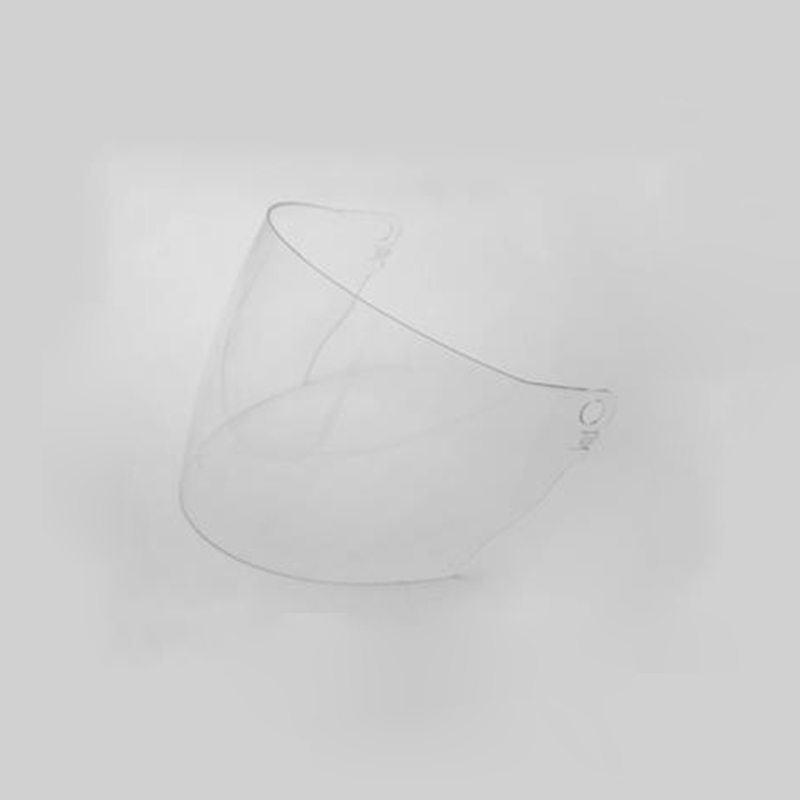There is a need for visors for helmet visor that have f […]
There is a need for visors for helmet visor that have functional insert regions having properties that are distinct from those of the rest of the visor, in order to provide an improved or additional safety feature. For example a photochromatic insert region can be used to enable the visor to change colour in response to incident light conditions such as sunrise and sunset.
The use of photochromatic pigments has been known for a long time and some types have been successfully developed that are capable of changing colour in response to incident light. However, the use of such materials for visors is highly expensive and the resulting visor is often susceptible to degradation from moisture or other factors that affect the optical quality of the photochromatic material. In addition, these photochromatic films are subject to peeling and can be difficult to remove once installed on the visor.
Alternatively the visor can be molded with an insert material that is a relatively low cost material, for example extruded film or a polymer composite such as polycarbonate. The insert material can be thermoformed into a curved 2D or 3D shape to form an insert. The insert is then located within a mould and injection molded with visor material to produce a visor with a functional insert region having the desired functionality.
In a preferred method of producing such an insert the injection molding process is followed by application of a coating to only the insert region and not to the visor as a whole. This reduces the number of treatments needed after moulding and can result in significant cost savings as only one treatment is required rather than two.
This coating is applied prior to the visor material being injected into the mold, if it is a single component injection molding method, or after the visor material has been injected into the mold if it is a multi-component injection molding method. The coating is either an anti-scratch or an anti-fog coating and is preferably of an appropriate thickness to ensure that the insert material retains its optical quality.
Another possible method of producing a seal or spacer for an overlay-visor is to produce a spacer or seal that has ridges on both sides of the seal or spacer that are adapted to contact the surface of an adjacent visor when the seal or spacer is biases against it. This can be particularly useful when the visor assembly is to be lifted.
A further alternative is to produce a spacer or seal for an overlay-visor that has a variable height along its length to provide a varying spacing between the overlay-visor and a shield visor. This can be especially useful when the visor assembly is to be mounted on a motorbike or similar.
In addition the mold is shaped and located so that it produces a spacer or seal that is capable of extending on both sides of the visor and the edge of the overlay-visor. In this way the visor can be reversible and a mechanical fastening element may also be provided on the overlay-visor to bind it to a shield visor.

Injection Plastic Helmet Visor Mould
Mold Life: 300000-1000000 Shots
Sprue Gate: YUDO Runner, Hot Runner, Cold Runner, Pn-Point Gate, Submarine Gate, etc.
Mold Material: NAK80,S136,2316,2738,H13,5CrNiMo,718H,P20 etc
Mold Cavity: Single Cavity,Multi Cavity or as per Request
Surface Requirements: Tech Polish, High Gloss, Texture
Runner Form: Hot Runner,Cold Runner
Taizhou Huangyan Chuangji Mould Industry Co.,Ltd.